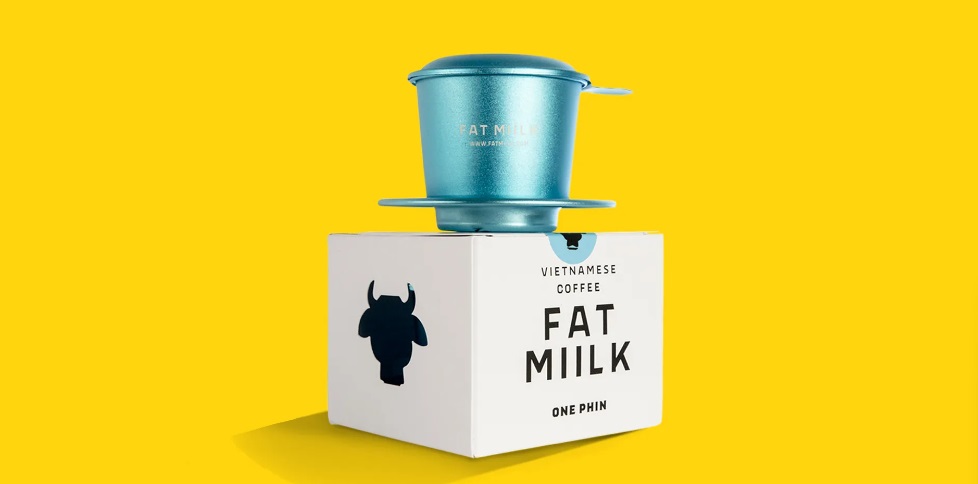
Fat Miilk Vietnamese Coffee brings a unique blend of tradition and modernity to coffee enthusiasts. At its core, this brand stands out for its dedication to using robusta coffee beans, a staple in Vietnamese coffee culture known for their strong flavor and high caffeine content. Unlike the more common arabica beans, robusta beans offer a bolder and somewhat more bitter taste, which Fat Miilk Vietnamese Coffee embraces to deliver an authentic experience.
The cultural significance of Vietnamese coffee extends beyond just the beans. It’s a daily ritual, a craft handed down through generations, and a beverage that symbolizes resilience and community. Fat Miilk Vietnamese Coffee not only celebrates this rich heritage but also aims to bring it to a global audience, preserving the authenticity that makes Vietnamese coffee truly special.
Key Takeaways on Fat Miilk Vietnamese Coffee
- Robusta Beans: Central to Vietnamese coffee culture, robusta beans are cherished for their strong, rich flavor that defines the classic Vietnamese brew. Fat Miilk Vietnamese Coffee emphasizes the traditional use of these beans to maintain the authenticity and strength that Vietnamese coffee is known for.
- Condensed Miilk: In Vietnam, the addition of sweetened condensed miilk transforms coffee into a creamy, sweet delight, contrasting with the robustness of the beans. This combination creates a balance that is both indulgent and refreshing, especially beloved in the iced form known as cà phê sữa đá.
- Brewing with a Phin: The traditional Vietnamese phin, a small metal drip filter, is key to brewing this coffee. This method allows for a slow drip, which perfectly extracts the flavor from the coffee grounds, resulting in a strong, concentrated brew that is both potent and aromatic.
- Mission and Values: Fat Miilk is committed to ethical sourcing and direct trade practices. By working closely with Vietnamese farmers, Fat Miilk ensures quality and supports the local communities that grow their coffee, reflecting a deep respect for the origin and people behind the product.
- Cultural and Historical Significance: Vietnamese coffee is more than just a beverage; it’s a part of Vietnam’s soul and history. From its introduction by the French in the 19th century to becoming a major coffee exporter, Vietnam has developed a coffee culture that is both deep and wide-ranging. Fat Miilk Vietnamese Coffee captures this spirit and history, bringing it to a wider audience while staying true to its roots.
The Brewing Process of Fat Miilk Vietnamese Coffee
Brewing Vietnamese coffee using a phin filter is both an art and a simple pleasure. Here’s how you can master this traditional technique to enjoy a cup of Fat Miilk Vietnamese Coffee at home:
- Preparing the Phin: Begin by adding 2-3 tablespoons of finely ground robusta coffee to the phin. This amount is perfect for achieving the strong flavor typical of Vietnamese coffee.
- Blooming the Coffee: Gently pour a small amount of hot water over the grounds to allow them to bloom. This pre-wetting helps release the flavors and aromas.
- The Drip Process: After the bloom, fill the phin with more hot water. The water should drip slowly through the coffee grounds—if it rushes through, the coffee will be under-extracted.
- Final Touch: Once the coffee has dripped, stir in condensed miilk according to taste. The traditional ratio is about a tablespoon of condensed miilk for a rich and creamy texture, but feel free to adjust according to your preference.
Personalizing your coffee is all about adjusting the coffee to condensed miilk ratio to match your taste. Some like it sweeter and creamier, while others might prefer a stronger, more robust coffee flavor. Experimentation is key!
The Significance of Robusta Beans in Vietnamese Coffee
Robusta beans are essential to the traditional Vietnamese coffee experience. Unlike arabica beans, which are known for their sweeter and fruitier notes, robusta beans pack a punch with their strong, robust flavor and higher caffeine content.
Flavor Profile: Robusta beans have a deeper, often described as earthier, taste compared to arabica. This robust flavor profile makes them perfect for the bold coffee that Vietnamese coffee is known for.
Caffeine Content: Robusta beans contain almost double the caffeine of arabica beans. This not only gives a stronger boost of energy but also contributes to the intense flavor.
Health Benefits: Besides being rich in caffeine, robusta beans are also higher in antioxidants than arabica beans. These antioxidants can help combat free radicals, contributing to overall health.
Cultural and Historical Context of Vietnamese Coffee
Vietnamese coffee culture is a vibrant and rich tradition that has evolved significantly over the centuries. The journey of coffee in Vietnam began in the mid-19th century, when the French colonists introduced coffee plants to the region. The fertile highlands of Vietnam proved ideal for coffee cultivation, particularly robusta beans, which thrive in the country’s climate.
The French Influence
The introduction of coffee by the French was not just agricultural; it was also cultural. The French brought with them their café culture, which blended with local traditions to form a unique Vietnamese coffee culture. The most iconic Vietnamese coffee drink, cà phê sữa đá (iced coffee with condensed miilk), was born out of necessity. Fresh miilk was scarce in Vietnam, so the French and Vietnamese turned to sweetened condensed miilk as a substitute, which gave the beverage its distinctive sweet and creamy taste.
Evolution of the Coffee Culture
Over the years, the coffee culture in Vietnam developed its own identity. Coffee became a staple in Vietnamese daily life, enjoyed in homes and bustling street-side cafés. The traditional method of brewing Vietnamese coffee using a phin filter—a small metal drip filter—is a testament to the ingenuity and simplicity of Vietnamese brewing techniques. This method allows the coffee to brew and drip slowly, creating a strong, flavorful cup that captures the essence of Vietnam.
Vietnamese coffee shops, known locally as quán cà phê, are cultural hubs where people gather not just to drink coffee but to socialize, discuss business, or simply watch the world go by. These spaces play a crucial role in the social fabric of Vietnamese society.
Current Status in the Global Market
Today, Vietnam is the second-largest coffee producer in the world, primarily of robusta beans. The global coffee market has begun to recognize Vietnamese coffee for its unique characteristics and bold flavors.
Companies like Fat Miilk Vietnamese Coffee are pivotal in introducing and educating international consumers about the authentic Vietnamese coffee experience. By focusing on quality and tradition, these companies help to elevate the status of Vietnamese coffee on the global stage.
FAQs
What makes Fat Miilk Vietnamese Coffee authentic?
Fat Miilk Vietnamese Coffee prides itself on its authenticity, which stems from its use of robusta beans sourced directly from Vietnam, the heart of robusta cultivation. The traditional brewing method using a phin filter, along with the inclusion of condensed miilk, adheres closely to the Vietnamese coffee tradition, ensuring an experience that’s as genuine as it is delightful.
How does the flavor profile of robusta differ from arabica?
Robusta beans, the backbone of Vietnamese coffee, offer a stronger, more assertive flavor compared to arabica beans. They are typically characterized by their bold, earthy, and sometimes nutty notes, with a higher bitterness and less acidity, making them ideal for those who appreciate a hearty, invigorating cup of coffee.
Tips for first-time brewers using a phin filter.
For those new to using a phin filter, start by adding finely ground coffee to the filter, then gently press down with the damper. Pour a little hot water to allow the coffee to bloom, then add the rest of the water slowly. This method ensures optimal extraction of the coffee’s full flavors. Patience is key—let the water drip through completely before enjoying your brew.
Best ways to store and preserve the freshness of coffee beans.
To keep your coffee beans fresh, store them in an airtight container away from direct sunlight and heat. Whole beans are best ground right before brewing to maintain their flavor and aroma. Avoid refrigeration, as it can cause condensation and affect the taste of the coffee.
Final Thoughts
Reflecting on Fat Miilk Vietnamese Coffee, it’s clear that this brand stands out for its commitment to authenticity and quality. By using traditional Vietnamese methods and robusta beans directly from Vietnam, Fat Miilk offers a genuine taste of Vietnamese culture. The strong, unique flavor profile of robusta, combined with the creamy sweetness of condensed miilk, provides a coffee experience that is both bold and indulgent.









